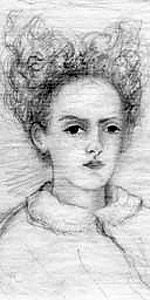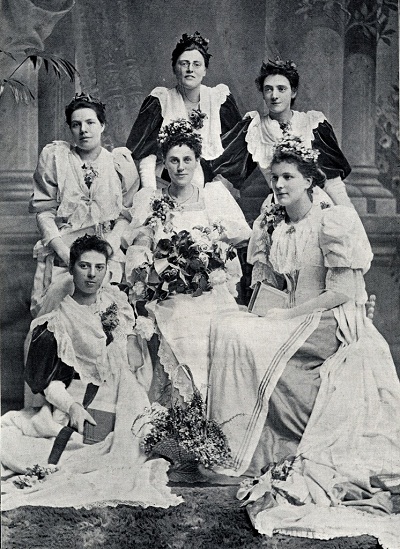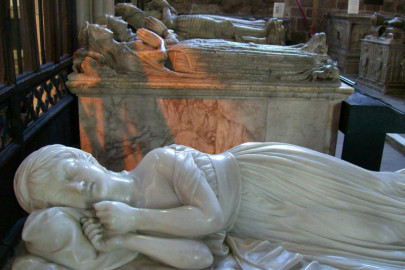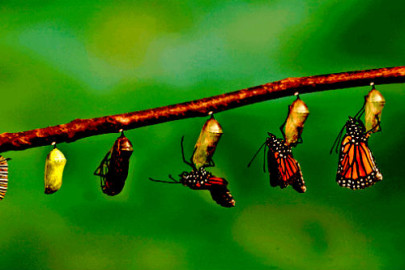A treat for you today,as the great Jonathan Law reflects on hawthorn blossom, Ruskin’s dark secrets and the death of a maiden…
According to W.G. Hoskins in The Making of the English Landscape, the hawthorn hedges of England are to be seen in their full splendour on one particular date – the 18th of May:
On that day these miles of snowy hedges reach perfection, so dense and far-reaching that the entire atmosphere is saturated with the bitter-sweet smell whichever way the summer wind is blowing.
With its heart-stabbing beauty, the great hawthorn show is clearly a case of what Brit used to call English Wabi-sabi (untranslatable, but a Zen concept that finds beauty in the very transience of things). Indeed, I’ve often wondered why we Anglos don’t have something like the Japanese cherry-blossom viewing festivals, when thousands go to picnic under the sakura and nightly bulletins chart the progress of the great wave of blossom breaking across the land.
But this year it’s all a bit different: Trinity Sunday, the last week of May, and the hawthorns down by the little River Thame are only just in flower. That’s the latest I can remember – an effect, no doubt, of the long cold spring that some of us can still feel in our bones like a bruise.
***
The walk down to the river is our default one for a Sunday, when a walk seems to be called for and no one has a better idea. You go to the play park at the edge of the new estate, cross the strip of waste ground left for the bypass that never was, cut across an angle of the golf course, push through a tiny tangled spinney – and there you are, in proper country, with the broad green valley of the Thame spread out before and below you. It’s the most ordinary slice of England you can imagine, and a muddy mess in winter – but today, with the low fields hazed with buttercups and the banks all billowing with cow parsley it’s hard to think of anywhere more lovely.
And you can factor in those great spooky hawthorns, beginning to blanch and shiver in the sun. It’s mostly down to them that I’m thinking about John Ruskin, who came this way on a May evening “all hawthorn and nightingales” 138 years ago to the day: 26 May 1875. The great man was in Aylesbury, to visit his printers at Hazell and Watson, an old firm still just about going when I moved here 20 years ago. While still in town, Ruskin would receive the telegram that he had long been dreading – the one bringing news that Rose La Touche, the young woman who had dominated his emotional life for some 16 years, was dead in a Dublin nursing home, at the age of 27. The doctors could make little of her illness but today we would surely diagnose some sort of eating disorder, made worse by religious mania and her mixed-up feelings for Ruskin, to whom she had twice refused marriage.
When they had first met Ruskin was pushing 40 and already revered as a kind of sage, while Rose was just 10 years old (her parents – rich Irish landowners – had taken him on as a drawing teacher). To the end of his life he would recall the solemn way in which the small girl offered him her hand “as a good dog gives its paw” and then stood back. Within four or five years, Ruskin’s interest had deepened into an all-consuming, sanity-threatening passion: tragically, he couldn’t decide whether he wanted ‘Rosie Posie’ to remain the odd little girl he had first known or to grow up into a marriageable woman (“Do I want to keep her from growing up? Of course I do,” he wrote). If this were not enough, the girl that Ruskin had fallen for was indubitably one of the few people around who might actually have been stranger than himself. A modern reader hardly knows what to make of poor Rose: with her wild roamings about the Irish hills, alleged psychic gifts, and artless stream of baby talk she comes across as part Cathy Earnshaw, part Madeline Bassett. To Ruskin, however, she was “the only living thing in the world” – and her death in 1875 would trigger the slow implosion of his mental universe.
According to his best biographer, Tim Hilton, Ruskin forever after associated Rose’s death with the hawthorn flowers he had seen in the Thame valley. “The story of my wild Rose is ended,” he wrote to Thomas Carlyle, “and the hawthorn blossoms this year would fall – over her”. And to another friend: “I have just heard that my poor little Rose is gone where the hawthorn blossoms go – which I’ve been trying to describe all the morning – and can’t get them to stay with me … I have been long prepared, so you need not be anxious about me. But the tree branches look very black.” Ruskin would later draw hawthorn leaves on either side of his journal entry for the day on which Rose had died – 25 May 1875.
As Ruskin must have known, a traditional meaning of the hawthorn was death: even today, people will avoid bringing the blossom into the house, half-believing it to be jinxed. Probably this has something to do with the pallor of the flowers, the ghostliness of their beauty – but there’s also the smell, that disturbing, aniseedy scent at once sweet and stifling. According to Richard Mabey, in his great Flora Brittanica, 17th-century folk would compare the sweet stench of hawthorn to the smell of the Great Plague in London. Botanists would later discover that the trimethylamine present in hawthorn blossom is one of the first chemicals formed in decaying animal tissue.
So for all its wild glamour there’s something a bit spooky about the hawthorn – something a mite eldritch, or as the Scots say wanchancy. Something to make you think of Wicker Man goings-on, or weird White Goddess stuff – pale girls being magicked up out of flowers and then fading glimmering through the air, to be followed over the world by love-crazed poets (or art critics).
The tree shadows are starting to stretch, down here by the Thame, and the breeze feels cooler. The river twists thickly under rooty banks, flashes out across gravel shillets, blossoms in the sun.
***
In the 1880s memories of Rose would inspire one of Ruskin’s more quixotic ventures – the May Celebration held each year at Whitelands College in Chelsea. Founded in 1840, at the height of the Oxford Movement, Whitelands was a teacher training college for teenage girls run on staunchly Anglo-Catholic lines. Ruskin had long been a benefactor of the college and in 1881, at his suggestion, the young ladies began to choose a May Queen to distribute the piles of books that he donated each year. As Ruskin hated the idea of girls competing, he stipulated that the honour should go to the “likeablest and loveablest”, rather than to the most gifted student; the winner received a silver cross with hawthorn-leaf design made by Arthur Severn (a later version would be designed by Burne-Jones). Over the years, the presentation of the Whitelands May Queen developed into an elaborate Gothick pageant, with dancing, processions, and the young ladies tricked out in demure outfits by Kate Greenaway – whose drawings of little mob-capped girls Ruskin sometimes said he preferred to Raphael.
In 1885 a similar ceremony was instituted at the High School for Girls in Cork, to which a Miss Martin, formerly a governess at Whitelands, had been appointed principal. In honour of his own Irish Rose, Ruskin called this the Rose Queen Festival and each year presented a gold cross, in the form of flowering branches of Rosa canina (again by Arthur Severn).
You can see samples of both sets of crosses in the British Museum and I’m told that replicas were once a bestselling item at Past Times (now itself a thing of the past).
This all seems pretty mawkish to us, in our own 21st-century time-bubble, and no doubt we are right to suspect something a bit creepy. Nothing went on that would trouble the hard-working chaps at Operation Yewtree, yet it’s hard to deny that Ruskin had a good deal of previous here. His special interest in girls’ education had begun two decades earlier, at Winnington, a progressive establishment in Cheshire that for some years was almost his second home. Here, as Quentin Bell puts it, “He lived on terms of sentimental intimacy with an entire girls’ school and the modern reader knows not whether to blush or snigger at the romps and oglings, toyings and teasings which were conducted with perfect candour under the benevolent eye of the headmistress.” In his last years, when mental illness clouded his judgment still further, Ruskin’s minders took steps to keeps him away from the little village school at Coniston, near his home.
Tim Hilton is probably the most sympathetic of Ruskin’s biographers but his conclusion is blunt: “Ruskin’s sexual maladjustment is not an uncommon one. He was a paedophile.”
***
There’s a long, eloquent, and strangely revealing passage on the hawthorn in Ruskin’s Proserpina (1886), subtitled Studies of Wayside Flowers while the Air was Yet Pure among the Alps and in the Scotland and England Which My Father Knew. Although purportedly a study of botany, this is actually a complex work of personal myth-making and as strange a book as even Ruskin produced. Proserpina, you may recall, was a young virgin snatched away by Death who became the goddess of spring flowers.
“I suppose there is no question but that all nice people like hawthorn blossom,” Ruskin begins, innocuously enough. However, the private obsessions come flooding in with mention of a certain date: “I want, if I can, to find out today, 25th May, 1875, what it is we like it so much for: holding these two branches of it in my hand – one full out, the other in youth.”
The mature, fully opened, blossom may look like unspotted snow, says Ruskin – but no, look more closely and you’ll see something else:
… failure – imperfection – nay, even distress and loss in it. For every little rose of it has a green darkness in the centre – not even a pretty green, but a faded, yellowish, glutinous, unaccomplished green; and round that, all over the surface of the blossom, whose shell-like petals are themselves deep sunk, with grey shadows in the hollows of them – all above this already subdued brightness, are strewn the dark points of the dead stamens – manifest more and more, the longer one looks, as a kind of grey sand, sprinkled without sparing over what looked at first unspotted light …”
So the fully developed blossom shows “imperfection”, not to mention “distress and loss”; the whiteness hides a darkness, and has grey shadows at its core. This is to be contrasted with the young, just opening hawthorn – described here in beautifully exact if disturbingly sexual language:
Then this next branch, in dawn and delight of youth, set with opening clusters of yet numerable blossom, four, and five, and seven, edged, and islanded, and ended, by the sharp leaves of freshest green, deepened under the flowers, and studded round with bosses, better than pearl beads of St. Agnes’ rosary – folded, over and over, with the edges of their little leaves pouting, as the very softest waves do on flat sand where one meets another; then opening just enough to show the violet colour within – which yet isn’t violet colour … but a different colour from every other lilac that one ever saw – faint and faded even before it sees light, as the filmy cup opens over the depth of it, then broken into purple motes of tired bloom, fading into darkness, as the cup extends into the perfect rose.
This, with all its sweet change that one would so fain stay, and soft effulgence of bud into softly falling flower, one has watched – how often … always with the feeling that the blossoms are thrown over the green depth like white clouds – never with any idea of so much as asking what holds the cloud there.
The young blossom appears to float weightlessly, without stalk or stem – and this, Ruskin implies, is why we so love it. But turn the side of the branch towards you and you’ll discover that this too is deceit: “Nature never meant you to see it so; but now it is all stalk below, and stamens above – the petals nothing”. By this cunning device “the tree conceals its structure till the blossom is fallen, and then – for a little while, we had best look no more at it …”
***
It’s three or four weeks since I started to write this piece and the hawthorn blossom has all gone over – nothing left but a few rusty flakes, a dusting of tobacco on the hedges. I suppose we had best look no more at it. This whole little valley of the Thame will go the same way, probably, as it’s here that the High Speed Rail Link is due to come hurtling through (“so every fool in Buxton can be at Bakewell in half-an-hour, and every fool in Bakewell at Buxton” – as Ruskin complained of another railway project). It’s not the sort of countryside that most people would feel a need to protect, but these are the muddy fields where my children have gone blackberry-picking and fallen out of trees and paddled and swum in the river. Hares I’ve seen down here, and two types of deer; even – amazingly – a polecat. I’ll be sad to see it go, but then I’ve reached an age when I’m sad to see anything go. For a moment I’ll stand with Ruskin and with Ezra Pound, channelling Confucius:
The blossoms of the apricot
blow from the east to the west,
And I have tried to keep them from falling.














Absent evidence that he actually committed child abuse, is it really fair to peg him as a paedophile? We take it for granted today that the Victorians were horribly warped and repressed in matters sexual, but they seem to have been very casual and indulgent about impulses and relationships that today would set off three alarm warnings and cause us to call the child protection authorities and prescribe lifelong therapy. We’re all Freudians now, and, while we don’t profess to care too much about what an adult actually does, their psyches, or our perception of them, seem to hold us in fascinated suspicion and terror. So who is actually more repressed?
I’m not prepared to call him a paedophile. However, based on this and previous posts about his hole-digging and amateur irrigation schemes, I am comfortable in proclaiming him a bit of a nut.
A lovely post though.
I wonder was Proust’s hawthorn obsession related to Ruskin’s? He was certainly an admirer…
Funnily enough, I was wondering that too. The ecstatic description of the hawthorn bushes near the start of Swann’s Way seems really quite Ruskinian to me, down to the invocation of gothic architecture and even perhaps those ‘blushing pink bodices’:
I found the whole path throbbing with the fragrance of hawthorn-blossom. The hedge resembled a series of chapels, whose walls were no longer visible under the mountains of flowers that were heaped upon their altars; while underneath, the sun cast a square of light upon the ground, as though it had shone in upon them through a window; the scent that swept out over me from them was as rich … as though I had been standing before the Lady-altar, and the flowers, themselves adorned also, held out each its little bunch of glittering stamens with an air of inattention, fine, radiating ‘nerves’ in the flamboyant style of architecture, like those which, in church, framed the stair to the rood-loft or closed the perpendicular tracery of the windows, but here spread out into pools of fleshy white, like strawberry-beds in spring. How simple and rustic, in comparison with these, would seem the dog-roses which, in a few weeks’ time, would be climbing the same hillside path in the heat of the sun, dressed in the smooth silk of their blushing pink bodices, which would be undone and scattered by the first breath of wind.
This also brings out the Catholic (and specifically Marian) associations of the hawthorn, which is something I didn’t get on to. May was always ‘Mary’s month’ in RC tradition and perhaps for this reason alone the hawthorn bloom was strongly associated with the cult of the BVM — something that clearly feeds into Ruskin’s cult of his own ‘mystic Rose’.
According to Richard Mabey (again), a sprig of blossoming hawthorn was a secret badge among the recusant families of Tudor England.
Yes, wonderful post. Like a Geoff Dyer novel in miniature but better.
My Nain used to say that the ‘old people’ used to call the may (aka hawthorn blossom) ‘bread and cheese’. I assume this was because the white flowers were as white as the caerphilly cheese they lived on and the black branches matched the wholemeal bread. One can’t help feeling Ruskin would have been a happier man if he’d had this plainer connotation!
A wonderful post. It took me back about ten years. I was travelling down a winding country lane and having taken a particularly sharp left-hander, suffered a momentary loss of control as I caught something I sensed to be out of the ordinary in my peripheral vision. I just had to look and there stood about 100/150 yards of hawthorn hedge covered along its complete length in blossom. If it had been a latter-day Marilyn Monroe lying naked, chewing on a buttercup, posing for an agricultural calendar – well you get fed-up with tractors – I wouldn’t have been more elated. There was nothing else in the field to break-up the view, not a tree, nor a bush, not even a cow. There should have been a warning sign before the bend ‘Keep Calm! Danger of Euphoria’. My reaction of ‘Good Lord, just look at that….’ was totally inadequate. What was needed was an Edward Thomas. He would have done justice to the scene. In his wonderful In Pursuit of Spring Thomas recalls his visit to Glastonbury Abbey in late March, 1913:
‘ The high pointed arches were magnificent, the turf under them perfect. The elms stood among the ruins like noble savages among Greeks. The orchards hard by made me wish that they were blossoming. But excavations had been going on; clay was piled up and cracking in the sun, and there were tin sheds and scaffolding. I am not an archaeologist, and I left it. As I was approaching the turnstile an old hawthorn within a few yards of it, against a south wall, drew my attention. For it was covered with young green leaves and with bright crimson berries almost as numerous. Going up to look more closely, I saw what was more wonderful — Blossom. Not one flower, nor one spray only, but several sprays. I had not up till now seen even blackthorn flowers, though towards the end of February I had heard of hawthorn flowering near Bradford. As this had not been picked, I conceitedly drew the conclusion that it had not been observed. Perhaps its conspicuousness had saved it. It was Lady Day. I had found the Spring in that bush of green, white, and crimson. So warm and bright was the sun, and so blue the sky, and so white the clouds, that not for a moment did the possibility of Winter returning cross my mind.’
Such a wonderful example of the blogger’s art (and even mentioning English Wabi Sabi) that I’m reluctant to turn this thread into debate about the insane waste of money that is HS2, so I’d better not.
Please feel free. Obviously, I’m against this thing mostly because it will pass a few hundred yards from my door. But it’s hard to see how the financial case stacks up, however you look at it. Sadly, they’ve spent so much on ‘consultation’ and so forth already that it’s probably poltically impossible for the govt simply to pull the plug.
NIMBY of course — but if you don’t look after your back yard, who do think will do it for you?
You’re right though Brit…